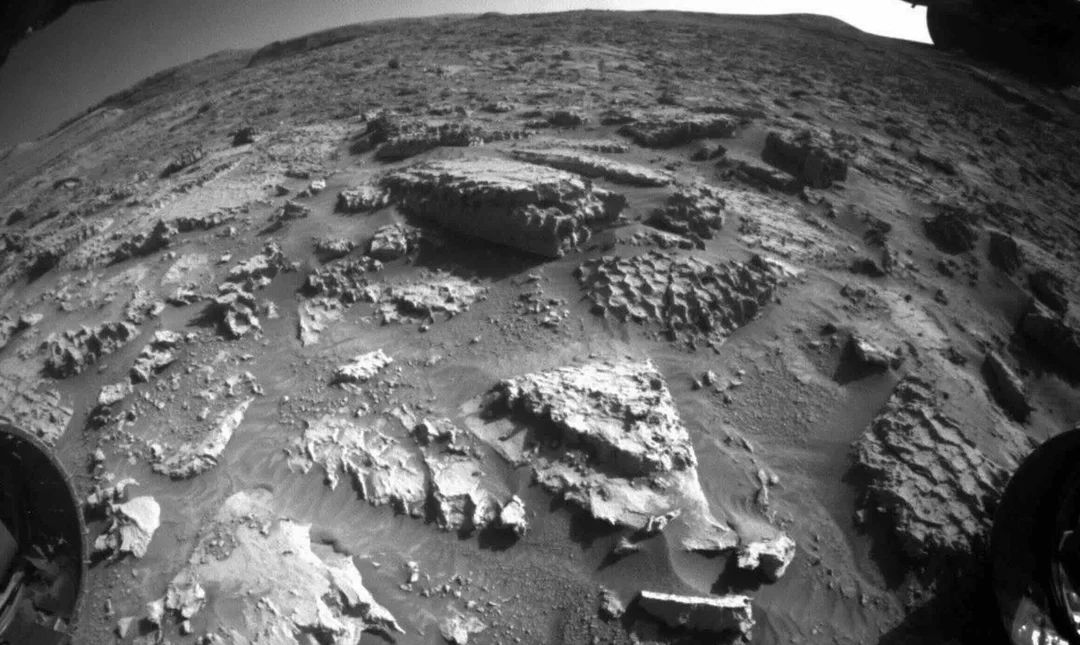
NASA’s Curiosity Rover Uncovers Mysterious ‘Honeycomb’ and ‘Waffle’ Patterns on Mars
NASA's Curiosity rover has made a fascinating discovery on the surface of Mars: unusual polygonal fractures resembling honeycombs or waffles. This find adds another layer to the mystery surrounding the Red Planet and sparks further questions about its past environment. The rover, which has been exploring Mars since 2011, continues to provide valuable insights into the planet's potential to have once supported life.

According to a recent update by Catherine O’Connell-Cooper, a planetary geologist, these patterns were observed upon arriving at the rover's current workspace. The terrain was described as being “full of rough, gnarly material,” presenting challenges for the Alpha Particle X-Ray Spectrometer (APXS), which is used to analyze chemical elements in Martian rocks. These images, captured by Curiosity’s Front Hazard Avoidance Camera (Front Hazcam) on May 1, 2025, reveal well-preserved polygonal fractures with raised ridges of about one centimeter, resembling a “patchwork of honeycombs, or maybe a patch of waffles.”
While such patterns have been observed before by the Curiosity team, these recent examples are among the most extensive and well-preserved, covering an area of approximately 30 meters. The polygonal patterns appear to extend close to the edge of “boxwork” fracture structures near Ghost Mountain butte, a target for future exploration.
The team focused on targets named “Orosco Ridge” and “Box Canyon”, using APXS to determine their composition. ChemCam will also analyze the bedrock and ridge fill. "We could stay here for a week and still find things to look at in this workspace," O’Connell-Cooper noted, highlighting the richness of the discovery site. The team also plans to examine the “Valley of the Moon,” a mosaic on a large block, to understand how fractures interact with each other and the planet's bedrock.
Beyond the intriguing “honeycomb” and “waffle” structures, Curiosity continues to gather vital environmental and atmospheric data. For over 12 years, the rover has been monitoring argon levels, water and chlorine presence in the subsurface, wind speeds, temperature, and ultraviolet radiation. The rover also captures images of Martian dust devils, providing a comprehensive understanding of the Martian environment.
These findings raise fascinating questions about the geological processes that shaped Mars. What caused these unique polygonal fractures? What secrets do they hold about the Red Planet's past? The Curiosity rover’s ongoing exploration promises to unveil more of Mars' enigmatic history.
What are your theories about the formation of these honeycomb and waffle patterns? Share your thoughts in the comments below!